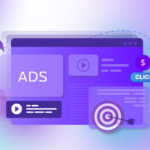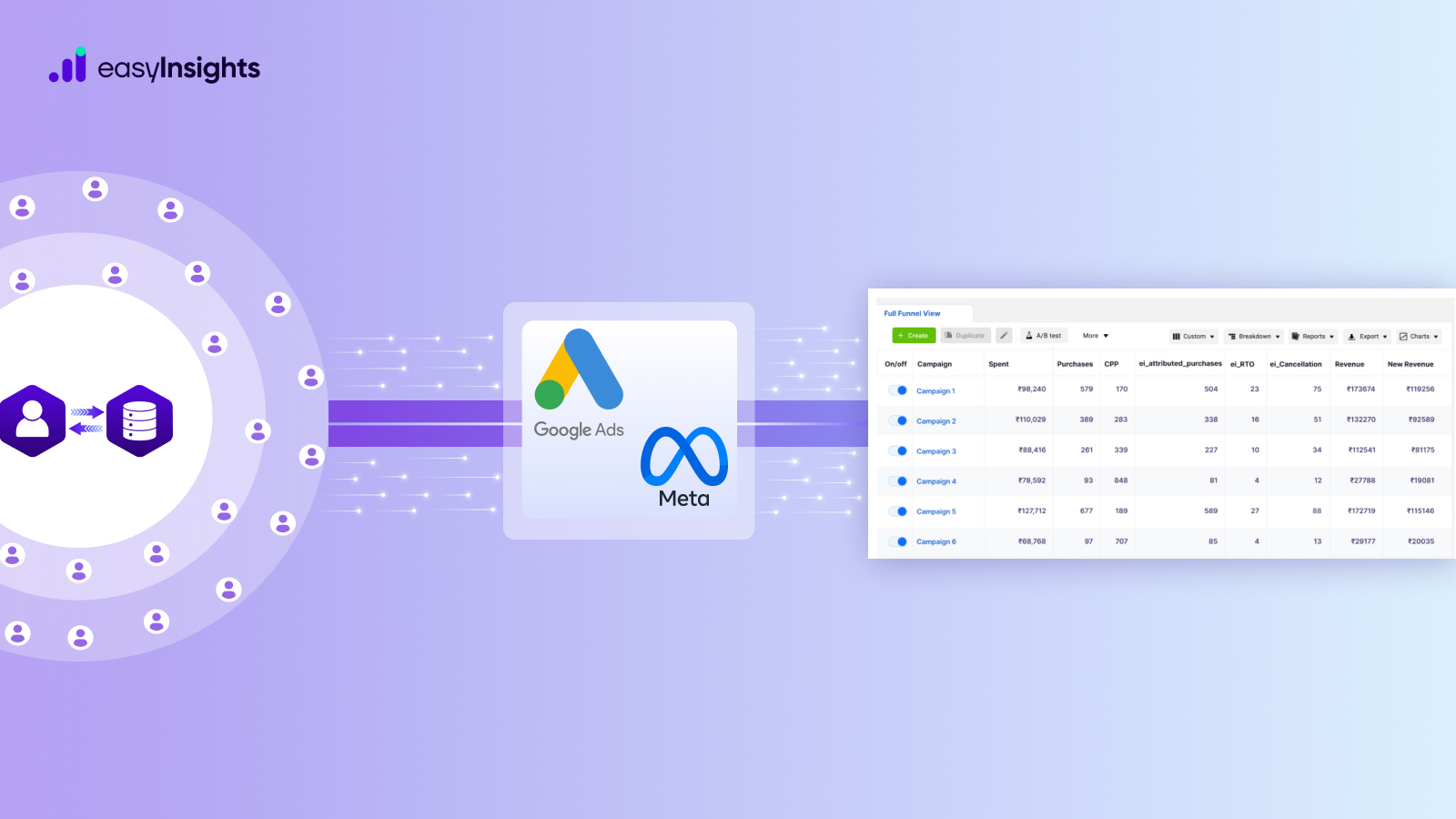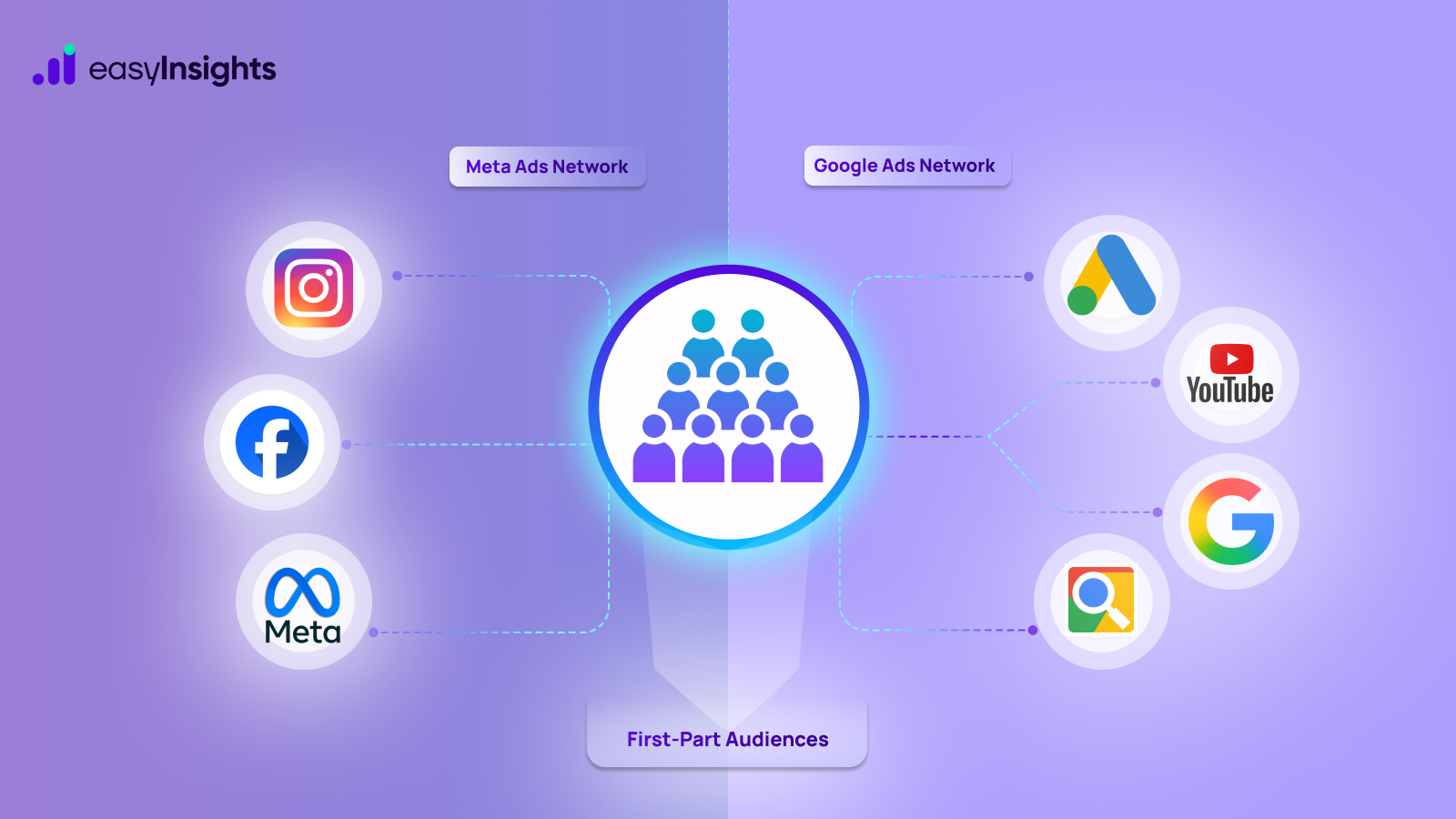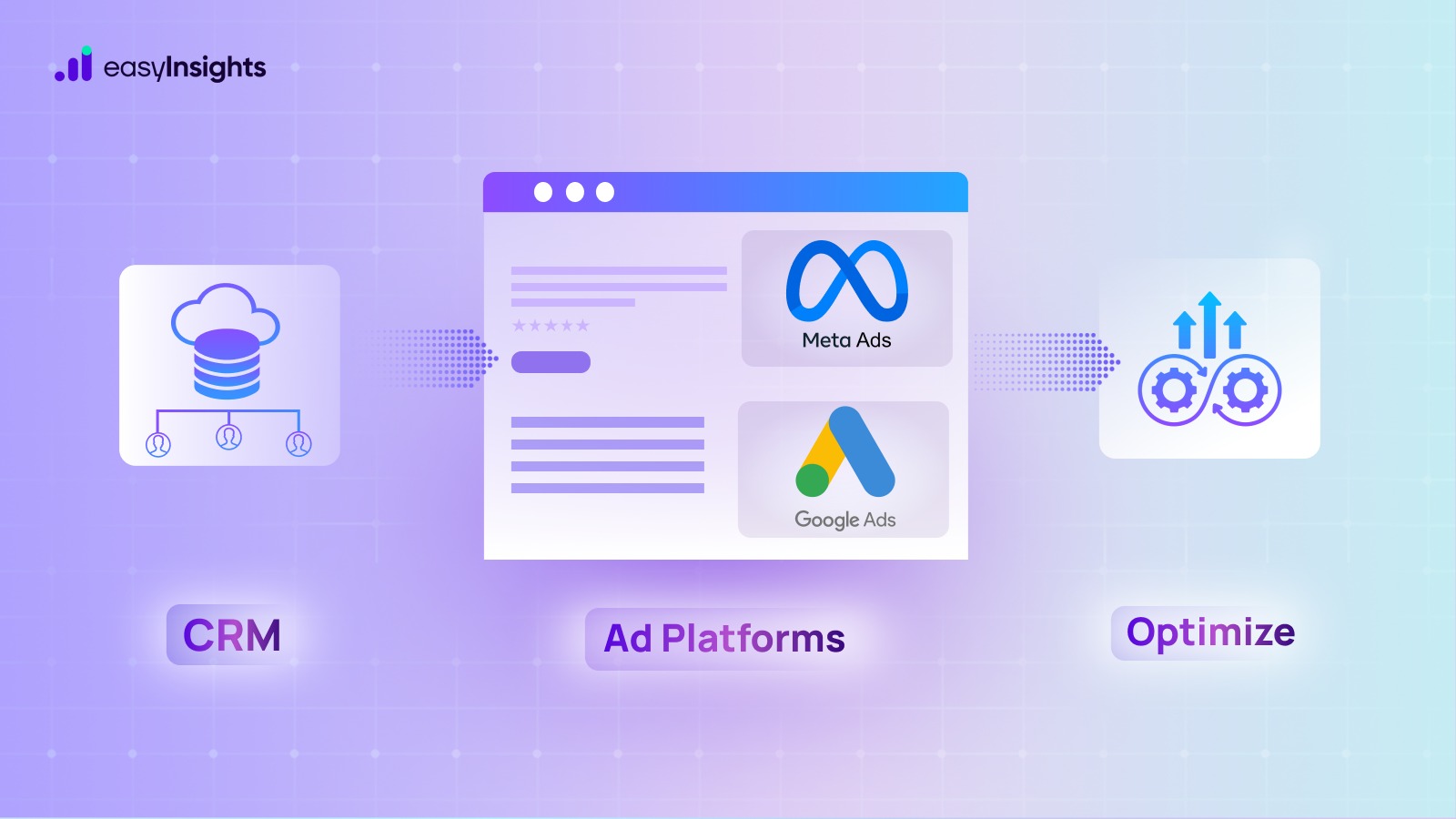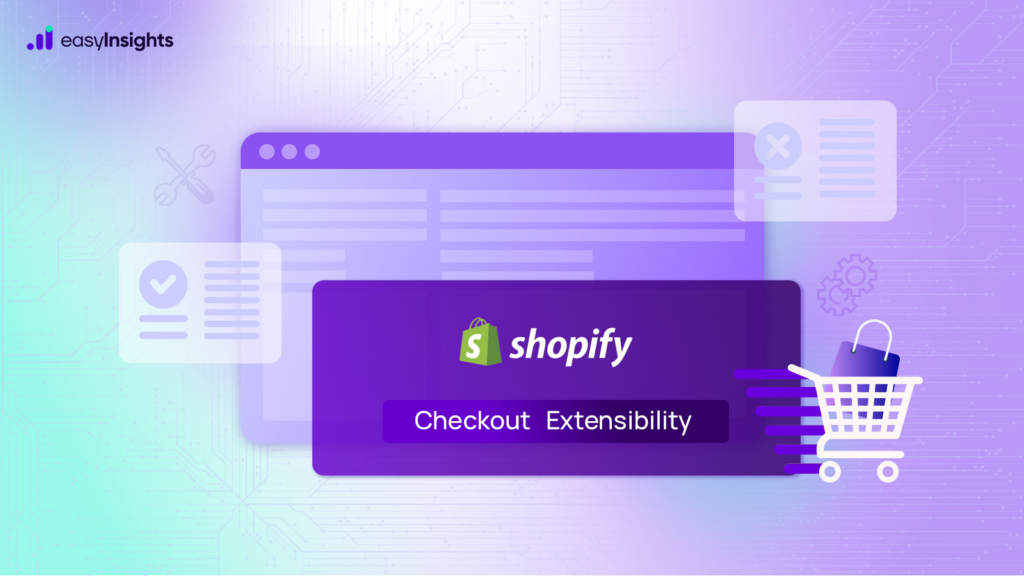
In today’s fast-moving e-commerce world, scalability is everything. Shopify brands aiming for growth need checkout experiences that are seamless, fast, and customer-friendly. That’s where Shopify’s third-party checkout extensibility tools come in. They promise smoother transactions, reduced cart abandonment, and higher conversion rates, sometimes boosting conversions by 15% to 30%, depending on industry and execution.
But there’s a catch. These tools can hamper data tracking due to domain changes during payment processing, weakening ad platform algorithms and making performance marketing less effective. To counteract this, brands need a robust solution like EasyInsights.ai, which ensures seamless data capture-sending accurate data to ad platforms, restoring marketing performance, and maximizing return on ad spend (ROAS).
Jump ahead to:
The Upside of Third-Party Checkout Tools
- Higher Conversion Rates & Reduced Cart Abandonment
Shopify’s third-party checkout extensibility tools simplify the buying process by offering fast, secure, and user-friendly payment options. This directly translates to better conversion rates.
- Brands using these tools often experience a 20-25% increase in conversions, with some seeing a 50% boost for returning customers.
- Optimized third-party checkout solutions can reduce cart abandonment by up to 45%, especially when mobile-friendliness is prioritized.
- Tools like Bolt, Fast, and Shop Pay have significantly shortened checkout times, leading to more completed purchases. Shop Pay’s one-click checkout, for instance, has been reported to increase conversions by up to 50% for returning customers.
- A seamless checkout experience also encourages impulse purchases by reducing friction from long forms and slow load times.
- Better User Experience & Mobile Optimization
Modern Shopify third party checkout extensibility tools, such as Shopify Checkout Extensibility, PayPal Express, and Stripe Checkout, prioritize a user-friendly interface and support multiple payment methods, including:
- Digital wallets (Apple Pay, Google Pay)
- Credit and debit cards
- Region-specific payment solutions
With over 60% of online purchases happening via mobile, these platforms are designed with mobile-first principles, ensuring smooth transactions across devices.
- Features like one-click checkout, saved payment details, and address auto-fill enhance user experience, build trust, and encourage repeat purchases.
- Well-designed checkout processes improve accessibility for customers with disabilities, ensuring inclusivity.
- Easy Integration with Shopify’s Ecosystem
Shopify’s third-party checkout extensibility tools integrate seamlessly with:
- Payment gateways (Authorize.Net, Worldpay)
- Fraud prevention solutions (ClearSale, Signifyd)
- Buy Now, Pay Later (BNPL) options (Affirm, Klarna, Afterpay)
- CRM and loyalty programs (Salesforce, HubSpot)
- Inventory and order fulfillment tools (ShipStation, OrderCup)
- Automated tax calculation and shipping label generation
Additional read – Set up Facebook Conversions API on Shopify
Downsides of Third-Party Checkout Tools
Below are some of the most common challenges businesses face when relying on third-party checkout solutions:
1. Loss of Valuable Data & Marketing Performance Decline.
A significant drawback of Shopify’s third-party checkout extensibility tools is the potential loss of checkout data, which is essential for optimizing ad performance on platforms like Meta Ads and Google Ads.
- When transactions occur outside a brand’s primary domain, customer demographic data, purchase behavior, and conversion tracking can be lost, impacting ROAS and campaign efficiency.
- Retargeting campaigns become less effective, leading to wasted ad spend and lower conversion rates.
- A study found that brands can see a 10-20% drop in marketing efficiency without proper cross-domain tracking.
Case Study: How EasyInsights.ai Helped “Kingdom of Lashes” Recover Marketing Performance
After implementing a third-party checkout tool, a Shopify DTC brand, “Kingdom of Lashes,” experienced a 30% drop in ROAS and a 25% increase in customer acquisition costs due to lost data. By integrating EasyInsights.ai’s advanced server-side tracking, they recovered lost data and achieved:
- A 22% boost in conversions within a few weeks
- 23% increase in customer acquisitions
- 23% higher ROAS
Technologies Used:
- Cross-domain tracking for checkout visibility
- Server-side API tracking
- Enhanced first-party data collection
Click here to read more similar case studies here.
2. Dependency on External Providers & Limited Customization
Using Shopify’s third-party checkout extensibility tools means relying on external providers, which comes with risks:
- Changes in provider policies, pricing, or technical issues can disrupt business operations.
- Service Level Agreements (SLAs) should be carefully reviewed to ensure adequate uptime and support.
- API limitations may restrict customization options for unique checkout experiences.
3. Potential Cost Implications
- Many third-party checkout extensibility tools charge transaction fees or take a percentage of sales, which can impact profitability.
- Costs vary based on platform, transaction volume, and payment methods, making it crucial for brands to assess ROI.
- Hidden fees can add up, so cost transparency is essential.
4. Branding Limitations & Checkout Experience Consistency
- Some third-party checkout tools restrict branding elements, making it difficult to maintain a seamless, on-brand checkout experience.
- A checkout process that looks different from the main Shopify store can create distrust among customers.
- Maintaining a consistent, recognizable experience is crucial for building customer loyalty.
How EasyInsights.ai Solves Data Loss Challenges
Seamless Server-Side Tracking for Maximum Marketing Performance
EasyInsights.ai ensures Shopify brands capture and transmit key data signals directly to ad platforms, bypassing browser limitations and preventing data loss.
- Guarantees complete, high-quality data for superior campaign optimization on Meta Ads, Google Ads, and other platforms.
- Enhances first-party data collection, improving both privacy and accuracy.
- Strengthens compliance with privacy regulations, reducing legal risks.
By leveraging EasyInsights.ai, Shopify brands no longer have to choose between seamless checkout and robust marketing data-they can have both.
Conclusion
For scaling Shopify DTC brands, third-party checkout extensibility tools offer undeniable benefits, boosting conversions and improving customer experience. However, they also introduce significant risks, such as data loss and marketing inefficiency.
EasyInsights.ai eliminates these challenges by providing industry-leading server-side tracking, ensuring brands retain full data visibility while maximizing ad performance. With EasyInsights.ai, Shopify brands can confidently use third-party checkout extensibility tools without sacrificing marketing impact, making it the go-to choice for e-commerce success.
To know more Book a demo today!



